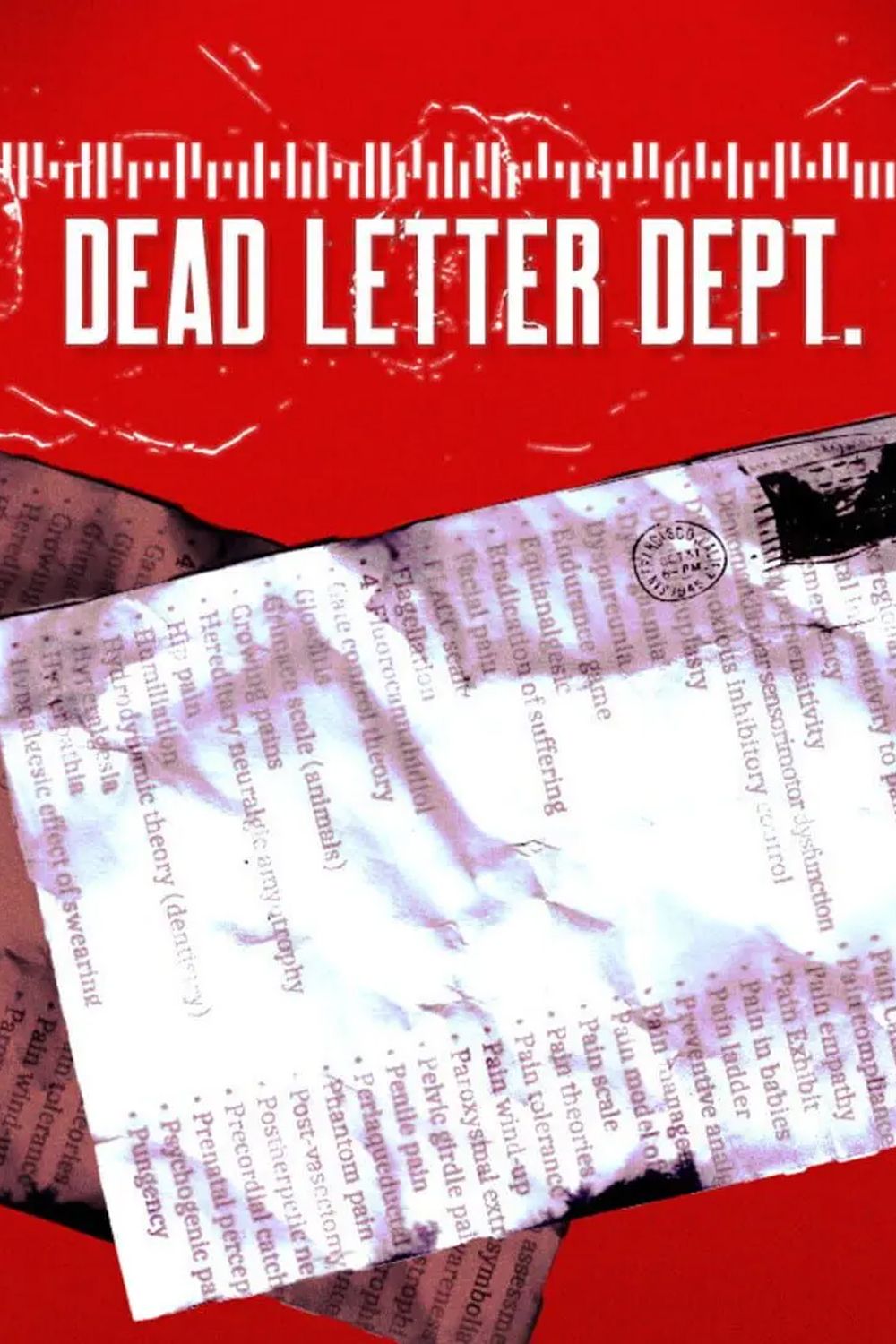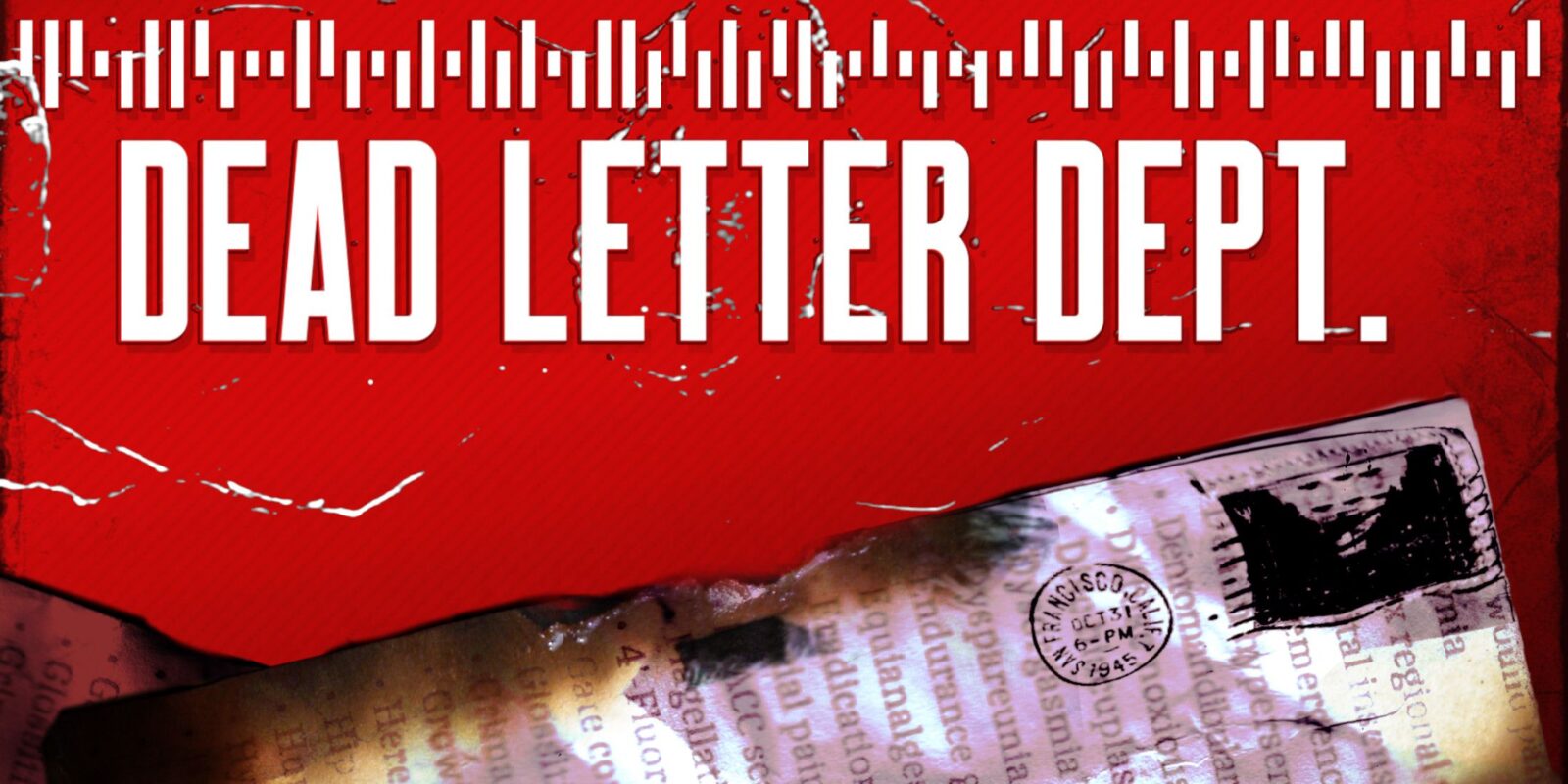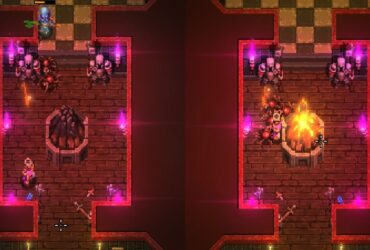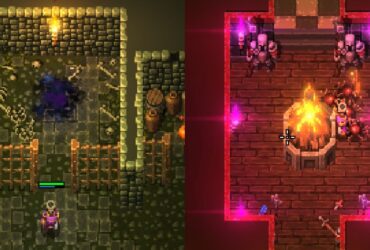Touch typing and horror aren’t two genres that typically go together in gaming, making DEAD LETTER DEPT. stand out among its many indie horror peers. It would be easy for a horror game to include typing as a simple gimmick, but in DEAD LETTER DEPT., typing makes up the vast majority of the title’s gameplay. The unnerving game does an excellent job of building tension through atmosphere, sound design, and moments that leave the player constantly second-guessing themselves.
DEAD LETTER DEPT. throws the player into the role of someone that’s out on their own for the first time, trying to break away from home into the big city. In an interesting take, players are allowed to fabricate their own story from the start, by way of writing a letter to someone important to them. Players can choose to be optimistic in their letter if they so choose, but the reality is that it’s not easy getting by in a cold city with no friends or family to lean on. In order to survive, the playable character secures a part-time job as a Data Conversion Operator, typing up text on mail that isn’t understood by the automated system. When the system doesn’t know what to do, an image of the mail arrives at the player’s terminal to decipher and type up. It’s a simple enough job description, and one that belies what players will end up facing.
DEAD LETTER DEPT. does an incredible job of building tension even before anything spooky happens. The player’s apartment, the main place they spend their time outside of the job, is dark and dismal, while simultaneously blinding with garish neon-like light pouring out of windows and doorways. The world feels cold and harsh, with no human faces to take comfort in, no one to talk to, and a main character that’s stuck between giving up on their dreams or being trapped in a nightmare. There’s minimal music in the game, but when it is used, it’s quite haunting, and reminded me a bit of some ambient Silent Hill tracks from Akira Yamaoka.
DEAD LETTER DEPT. Pushes Anxiety Without Feeling Cheap
DEAD LETTER DEPT.‘s gameplay, outside of traversing to and from work, revolves entirely around using a decrepit computer terminal with janky software. Players are seated in an otherwise empty room, back turned to the sole door, with only a pair of windows looking onto a dark back alley to gaze at, allowing the eerie atmosphere of the game to sink in. Once the work begins, players are effectively glued to their seat, and cannot exit or look around until they’ve completed their tasks, creating a sense of being trapped. Most mail will arrive with a highlighted yellow passage, showing the player what they need to type. It’s a simple enough task in theory, and does resemble simple real-world data entry work. Sometimes, the text is illegible and has to be skipped or guessed at, while other times what a player types doesn’t seem much more meaningful than a simple CAPTCHA test. However, it doesn’t take long for things to start feeling off. Letters start taking dark turns, with angry messages, disturbing descriptions of historical events, and momentary glimpses at things that don’t seem like mail at all.
The Typing of the DEAD LETTER DEPT.
The notion of getting through a game about typing may seem intimidating to some, but it was handled quite well by the developers. For the most part, players are allowed to take as long as they like figuring out what’s on the screen and entering the necessary information. In some rare instances, there are timed typing sections that need to be completed before the counter reaches 0. However, players who don’t type quickly don’t need to worry too much about it. DEAD LETTER DEPT. keeps track of the player’s typing speed, and adjusts the amount of time given to a player during these segments accordingly. Depending on how I typed, I might have had just a few minutes to get the work done, or over 10 if I went slowly prior to the timed sections coming up. When typing at my natural speed, I found I needed to focus and not dawdle during the timed portions, but it was completely manageable.
In addition, players are given a few simple tools to make entering addresses easier. Copying and pasting can be achieved with a pair of shortcuts, and an auto-fill function can finish a partially entered address and format it correctly. Players are free to use these shortcuts or type everything out manually, depending on their preference. The game is also fairly forgiving of mistakes for the most part, either accepting mail despite the mistake, or recycling it through the queue so the player can try again. With that said, being able to touch type is an absolute must. Players who struggle to find the keys or otherwise can’t type without looking at the keyboard may end up missing what’s happening on-screen.
The Show Must Go On in DEAD LETTER DEPT
In terms of replayability, DEAD LETTER DEPT. has a surprising amount to offer. The basic story is always the same, but the game features multiple endings that go beyond simply winning or losing. Players may start to recognize patterns and names as they process the mail, with some interesting stories emerging if one pays enough attention. The game also has a way of acknowledging a player’s past playthroughs, and while I won’t spoil it here, it certainly boosted the overall creepiness.
Those who typically rely upon save scumming will find this game a bit more difficult, though. By default, DEAD LETTER DEPT. has a very limiting method of saving, which is useful for the narrative and keeping players in suspense, but could pose some minor problems depending on a player’s available time and playstyle. Players are normally limited to one save per playthrough, and that save can only be accessed once. After the game is booted up and the save loaded, it will be deleted, meaning the player must complete their playthrough without stopping from that point or lose everything. Each playthrough of the game took under two hours in my experience, so that is a good amount of time to consider putting aside to play the game. While some may find it frustrating, I thought it was an excellent way of keeping tension high, since players can’t just save and quit whenever they get too scared to continue. However, there is a way of switching to multiple saves if a player prefers that.
All things considered, DEAD LETTER DEPT. is an excellent horror game that defies expectations. It reminded me of the situation the protagonist of the Dark Water film found themselves in, with both stories telling a tale of a character who can’t block out the sense that something is tremendously wrong in their new environment, yet their troubles are largely handwaved away and given vague explanations by others that leave the protagonist wondering if they’re just overreacting up until it’s too late.
DEAD LETTER DEPT. is a relatively short game that a player could potentially spend less than 10 hours playing to complete all endings, depending on how quickly they discover how to get them. Yet, it delivers a potent experience that deserves a spot in the library of avid indie horror fans. Players who can withstand the frights the game generates will find an intriguing story that doesn’t hold the player’s hand and tell them what to do.

- Publisher(s)
-
Belief Engine
- Developer(s)
-
Belief Engine
- Anxiety-inducing atmosphere and soundtrack
- Great for fast typers, but adjusts for everyone
- Multiple endings
- Touch typing is a must
- Some prompts can be difficult to find or read












Leave a Reply